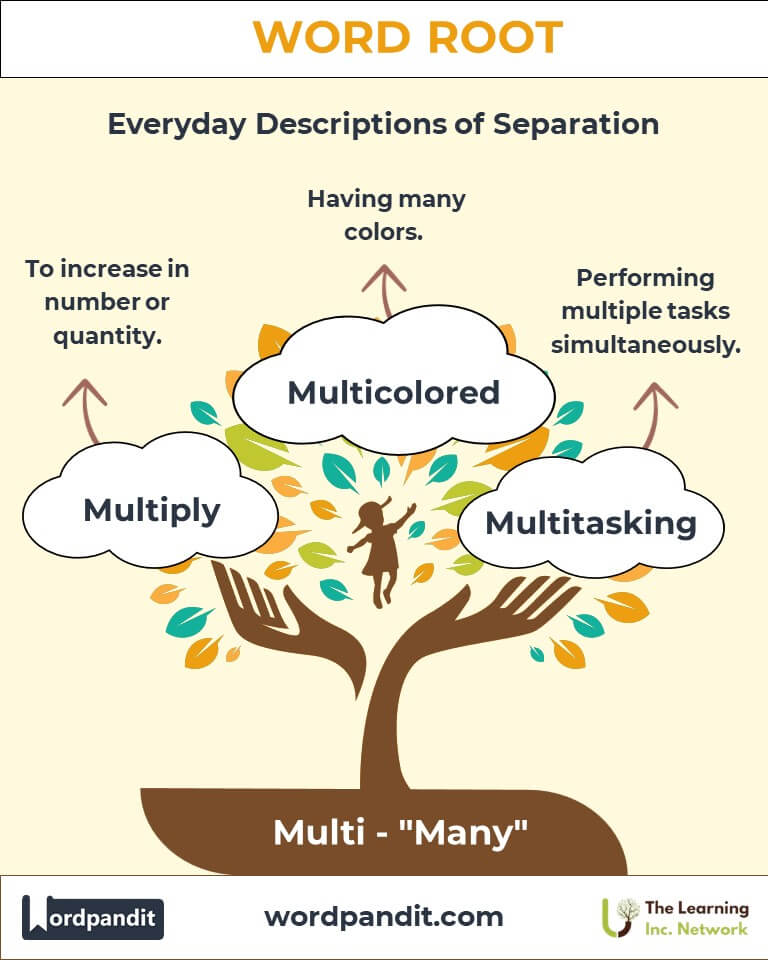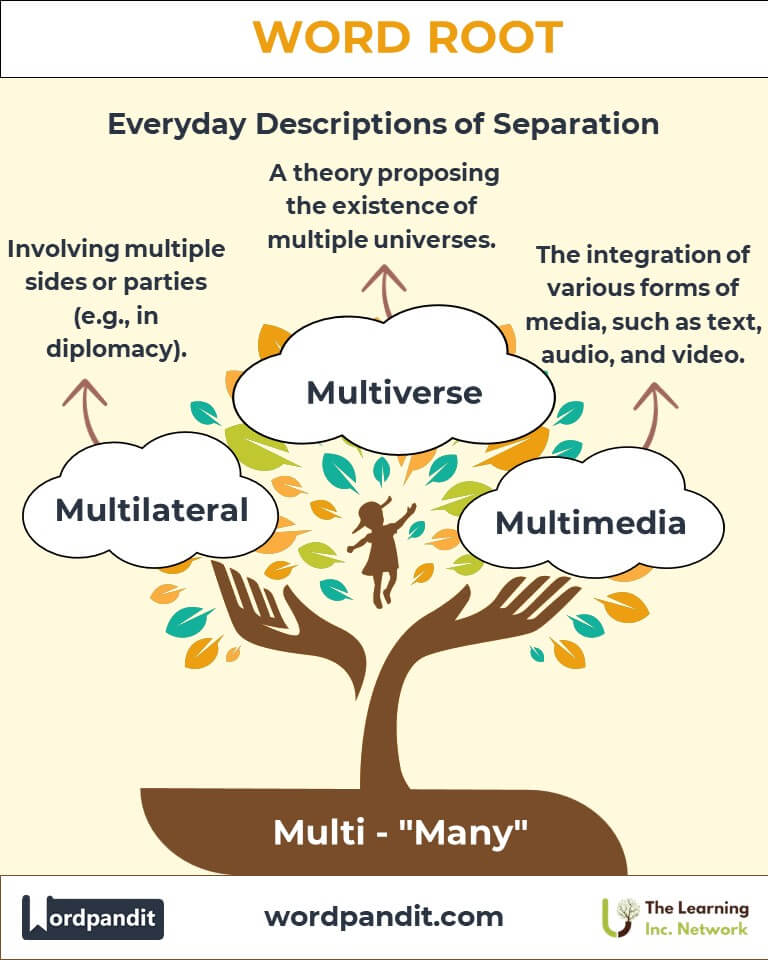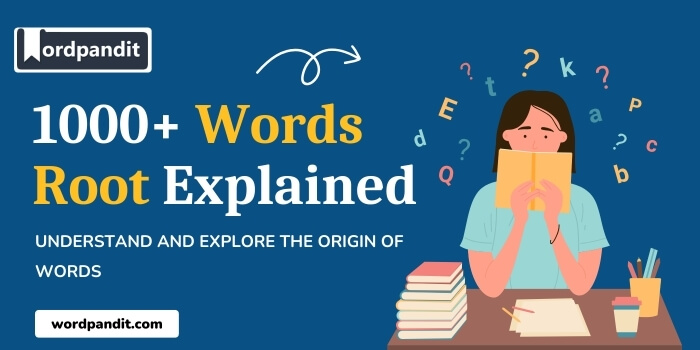Multi: The Root of Multiplicity in Language and Expression
Discover the versatile word root "multi," derived from Latin meaning "many." This root forms the backbone of numerous words that emphasize abundance, variety, and inclusivity. From "multiply" to "multilateral," explore how this root enriches language across disciplines and cultures.

Table of Contents
- Introduction: The Essence of "Multi"
- Etymology and Historical Journey
- Mnemonic: Unlocking the Power of "Multi"
- Common "Multi"-Related Terms
- "Multi" Through Time
- "Multi" in Specialized Fields
- Illustrative Story: "Multi" in Action
- Cultural Significance of "Multi"
- The "Multi" Family Tree
- FAQs about the "Multi" Word Root
- Test Your Knowledge: "Multi" Mastery Quiz
- Conclusion: The Living Legacy of "Multi"
1. Introduction: The Essence of "Multi"
From the diversity of "multicultural" societies to the efficiency of "multitasking," the root "multi" serves as a linguistic symbol of variety and abundance. Pronounced "muhl-tee," this Latin-derived root carries the meaning of "many," highlighting its significance in describing plurality and complexity in numerous contexts.

2. Etymology and Historical Journey
The word root "multi" originates from the Latin term multus, meaning "many" or "much." It entered English vocabulary during the Middle Ages as part of the language's transformation through Latin and French influences. Over centuries, "multi" has been adapted into countless terms, emphasizing its flexibility and relevance in various disciplines, from mathematics to diplomacy.
3. Mnemonic: Unlocking the Power of "Multi"
To remember "multi," visualize a bouquet of flowers, each a different color and type, symbolizing diversity and abundance.
Mnemonic Device: “Multi means many, like stars in the sky or flowers in a field.”
4. Common "Multi"-Related Terms
- Multiply (muhl-tuh-plahy): To increase in number or quantity.
Example: "The cells began to multiply rapidly under the microscope." - Multilateral (muhl-ti-lat-er-uhl): Involving multiple sides or parties.
Example: "The countries engaged in a multilateral agreement to promote peace." - Multicolored (muhl-ti-kuhl-erd): Having many colors.
Example: "The multicolored tapestry adorned the walls of the ancient hall." - Multitasking (muhl-ti-task-ing): Performing multiple tasks simultaneously.
Example: "Multitasking can increase productivity but may reduce focus." - Multinational (muhl-ti-nash-uh-nl): Operating in multiple countries.
Example: "The multinational company employs people from all over the world."
5. "Multi" Through Time
- Multiverse: Originally a concept in philosophy, the multiverse theory gained prominence in physics and popular culture to describe parallel universes.
- Multiplex: Historically used for multiple signals or forms of communication, now often refers to movie theaters with multiple screens.
6. "Multi" in Specialized Fields
- Mathematics: Multiplication—a foundational operation in arithmetic that involves adding a number to itself multiple times.
- Diplomacy: Multilateralism—a policy that involves several nations working together on global issues like climate change or trade.
- Technology: Multimedia—the integration of various forms of media, including text, audio, and video, for communication or entertainment.
7. Illustrative Story: "Multi" in Action
Amara, a linguist working in a multicultural city, was tasked with designing a multilingual learning app. Drawing inspiration from her multicolored background—her father spoke Spanish and her mother Mandarin—she created a tool that allowed users to multitask, learning new words while playing games. Her innovation showcased how "multi" enriches not just vocabulary but also human connection.
8. Cultural Significance of "Multi"
The root "multi" symbolizes the beauty of diversity. Multicultural festivals celebrate traditions from various heritages, while multilingual literature bridges cultures. In an increasingly interconnected world, "multi" reminds us of the strength found in variety and collaboration.

9. The "Multi" Family Tree
- Poly- (Greek: "many"):
- Polygamy: Marriage to multiple partners.
- Polygon: A geometric shape with many sides.
- Omni- (Latin: "all"):
- Omnivore: An organism that eats both plants and animals.
- Omnipresent: Present everywhere at once.

FAQs about the Multi Word Root
Q1: What does "multi" mean?
A: "Multi" means "many" or "much." It is derived from the Latin root multus, signifying abundance or plurality. This root is used in various disciplines to emphasize multiple components, such as in "multicellular" (having many cells) or "multilateral" (involving many parties or sides).
Q2: How does "multi" differ from "poly"?
A: While both "multi" and "poly" mean "many," they originate from different languages. "Multi" is from Latin, while "poly" is from Greek. The two roots are used in different contexts, such as "multicolored" (Latin influence) versus "polygon" (Greek influence), which means a shape with many sides.
Q3: What is a common use of "multilateral"?
A: "Multilateral" is frequently used in diplomacy to describe agreements or discussions involving multiple countries or parties. For example, a multilateral trade agreement might include several nations collaborating to establish common trade practices.
Q4: How does "multi" appear in scientific terminology?
A: In science, "multi" is widely used in terms such as "multicellular" (organisms with many cells) and "multiplication" (an arithmetic operation involving repeated addition). It emphasizes the existence or involvement of multiple components or entities in scientific phenomena.
Q5: What is the significance of "multiply"?
A: "Multiply" comes from the Latin multiplicare, meaning "to fold many times." It signifies the process of increasing numbers, quantities, or amounts by combining them repeatedly, whether in arithmetic, biology, or general usage (e.g., multiplying resources to meet demand).
Q6: Is "multi" relevant in modern technology?
A: Yes, "multi" appears in technological terms like "multimedia" (the integration of text, audio, and video) and "multitasking" (performing multiple tasks simultaneously). These words reflect the dynamic and multifaceted nature of technology in modern life.
Q7: How is "multi" connected to globalization?
A: The root "multi" appears in terms like "multinational," which describes corporations or entities operating across multiple countries. This reflects the interconnected nature of today’s global economy and the importance of cultural and economic plurality.
Test Your Knowledge: Multi Mastery Quiz
1. What does the root "multi" mean?
2. Which term refers to companies operating in multiple countries?
3. Which term describes simultaneous tasks?
4. What does "multilateral" relate to?
5. What is the meaning of "multiverse"?
12. Conclusion: The Living Legacy of "Multi"
The root "multi" enriches our language by expressing abundance and diversity. From science and technology to culture and diplomacy, its applications reflect a world interconnected by plurality. As we move toward a more inclusive future, "multi" continues to remind us of the strength and beauty in multiplicity.












